Special engine to attend High Weald Steam Rally
Posted by Chris Graham on 29th May 2024
Dave Vaughan spotlights a 1922 McLaren road locomotive as it prepares for the High Weald Steam Rally at Pippingford Park, next month.
All photos by Peter Love, unless stated otherwise
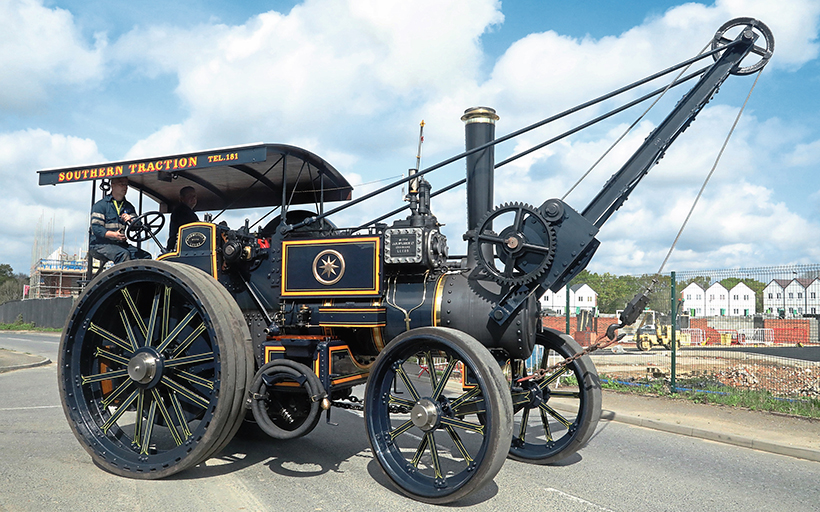
A contrast of old and new, with a large unprepossessing housing development in the background, No. 1713 stands ready for the open road as a reminder of our once proud engineering history.
On Wednesday 12 June, 1922 McLaren 8hp road locomotive No. 1713 will be leading the heavy haulage road train from Burgess Hill to Pippingford Park, Nutley TN22 3HW, in West Sussex, where it will be one of over 30 engines attending the High Weald Steam Rally.
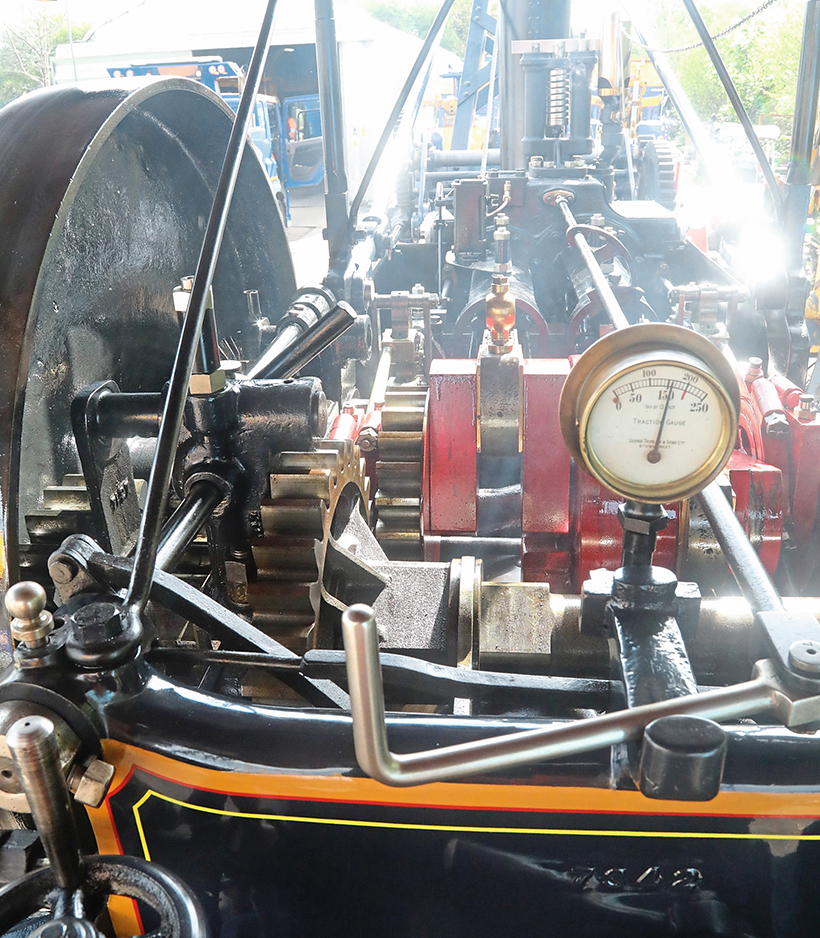
The morning sun glints off the motion as the pressure gauge tops the 150psi mark. Raising steam took about 90 minutes.
No. 1713 will be pulling the Dave Mansi-owned Tasker pneumatic-tyred, 30-ton, heavy-duty trailer with the boiler assembly of November 1948 Merchant Navy Class 4-6-2 Pacific No. 35025 Brocklebank Line on top! This engine is currently undergoing a prolonged restoration project by Southern Locomotives Limited.

Who remembers Michael Palin in Ripping Yarns ‘Albert Oldroyd’s got a new shovel’? Well, this is Paul’s new shovel atop what is sadly one of the last runs of Welsh steam coal. The design of the footplate and shape of the tender on the McLaren allows the crew more room, as the steersman’s seat swings out.
ROAD RUN ROUTE
The route the load will be taking and the timings may be subject to change, if circumstances on the day dictate that. However, the plan is it will be leaving Isaac’s Lane, Burgess Hill at 11am approximately on Wednesday 12 June. It will be travelling through Haywards Heath on the B2272 and then via the A272 Lewes Road. From there it will join the A275 all the way to Wych Cross and then on to the A22 to the rally site at Pippingford Manor Park which will be clearly signposted and is between Wych Cross and Nutley.
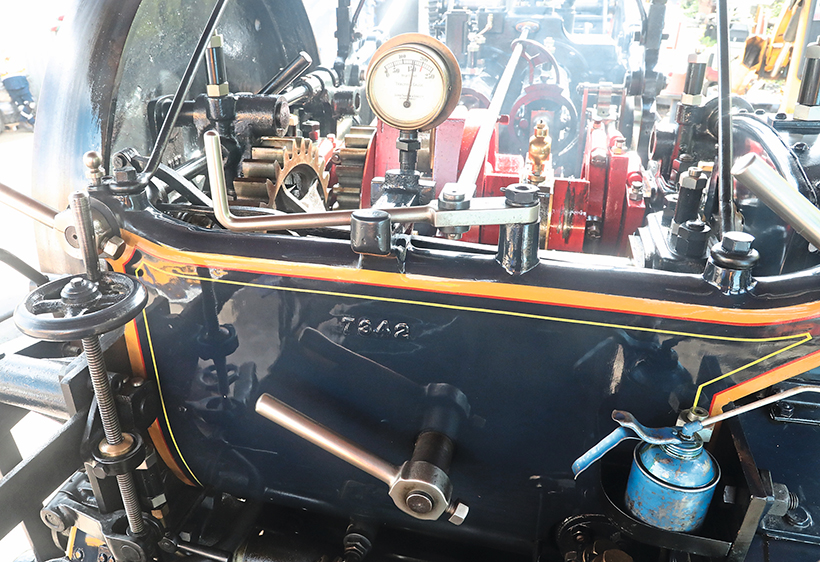
The most interesting and unique McLaren gear change lever is clearly shown.
The rally itself is billed as a working event and will be held over the weekend of June 15-16. If last year’s event is anything to go by, on the smaller site, it will be a real cracker, the best rally by far on the South East calendar for working and more. However, the line up of tractors, heavy commercials, and cars was quality all the way as well.
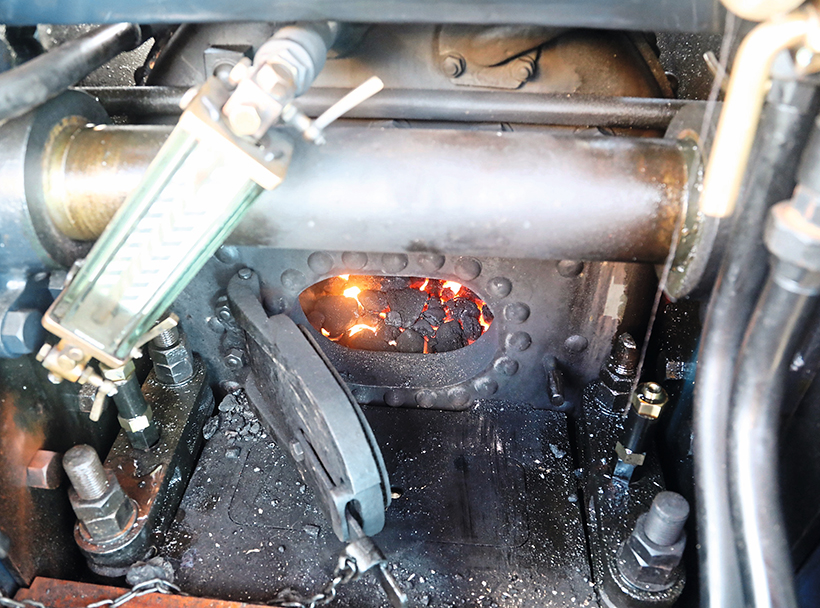
With water in the gauge glass and a good fire in the box, we are almost ready for the off.
Obviously the star in 2024 will be No. 1713 know to so many as The Banshee, the name Lord O’Neill gave the engine in 1973, but owner Paul Attwater might revert to the name it is thought to have been called when new, General French. Time will tell on that one, but it’s wonderful to have this powerful and underrated engine back on the rally scene. This is after a five year restoration and it will be giving demonstrations of heavy haulage with its crane and draw bar both days of the show.
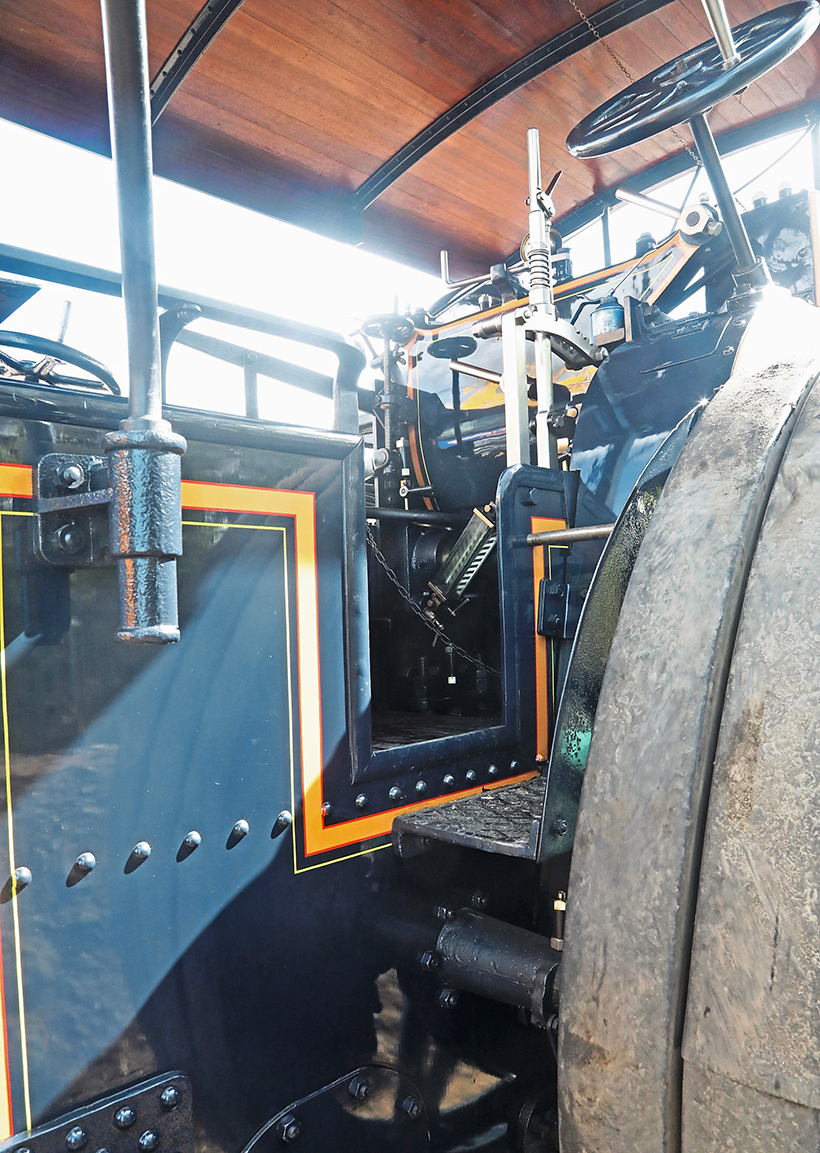
Gaining access to the footplate is easy as the steps are positioned sensibly. The design of the reversing lever is interesting and in my humble opinion, the driver’s controls are well placed making the job easier.
OWNER PAUL ATTWATER
Paul is a director of Southern Recovery Services based at Burgess Hill in West Sussex. The company has a fleet of 16 specialist heavy recovery vehicles, including at least two that are specially adapted for off-road recovery jobs. His family started the business in the early 1960s and took a chance by raising a mortgage on a garage business in Brighton. They started out with a Scammell recovery and later, as gross vehicle weights got bigger, bought Diamond Ts moving to larger premises in Hickstead.
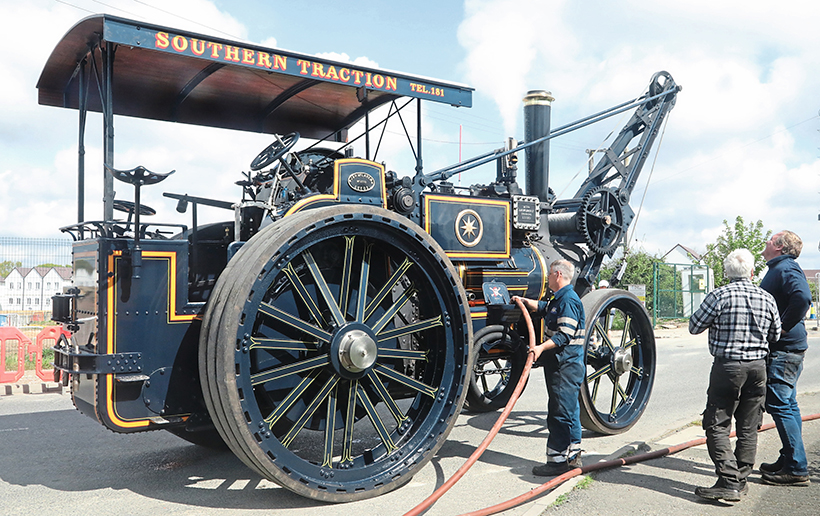
Out in the yard we see Paul Attwater, the proud owner of No.1713, topping up the belly tanks ready for a short road test. Looking on is renowned Sussex steam engineer, Jimmer Marsh.
They now have extensive garage and workshop facilities in Burgess Hill and are one of the largest specialist recovery firms on the south coast today. Paul has been interested in heavy haulage since a young lad, about 20 years ago, his wife Jane took him to the Great Dorset Steam Fair where he particularly wanted to see the ex-Pickfords and other heavy haulage lorries. However he came away hooked on steam and later became the owner of 1908 Marshall 6hp GP traction engine No.51007 which in the restoration was converted to three-speed. They also restored, to a very high standard, a 1912 Foden 6hp single-cylinder traction engine No. 3261 that had returned from service in Australia like the Marshall.
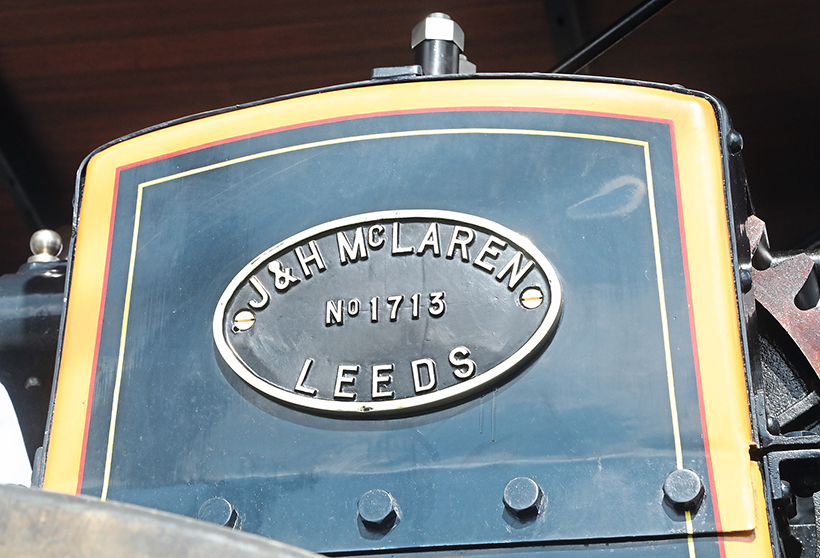
The McLaren works plate of No.1713 showing the attractive style of the lining out.
Back in April 2017 High Weald joint organiser Dave Mansi rang Paul while at the Cheffins Vintage Collective at Sutton, Cambridgeshire, while leaning up against No.1713 which owner David Birch had stripped it of its showman’s fittings. Dave proclaimed to Paul on the phone “this is the road loco that you have been after.” Paul professed that he did not want another project at that time, but a seed had been sown, and we shall see in the following account in next month’s Old Glory how it all evolved.
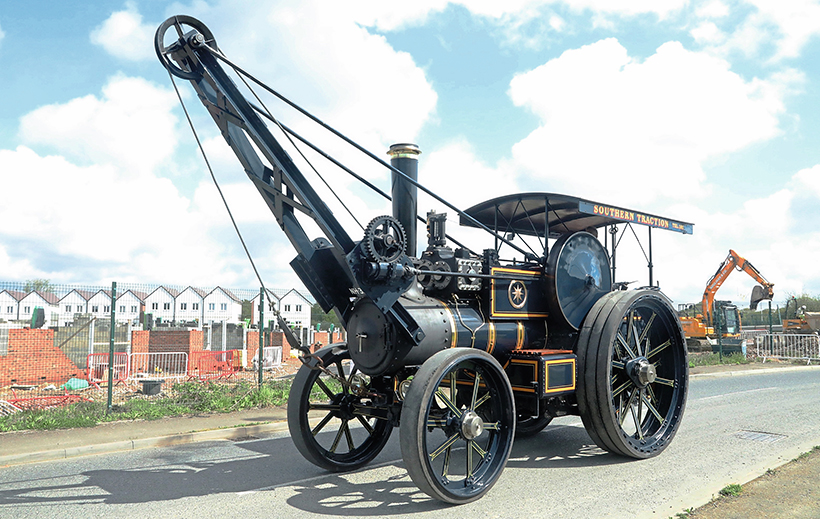
No.1713 heads out on the road in a smooth unflustered way.
In the meantime the editor and myself were invited on Monday 29 April to a prelude to the road run, by seeing the mighty Mclaren now back with its crane all fabricated by the Attwater team in 2018, in steam and on the road. We can only say it is nothing but an impressive sight. This is after its major overhaul at Sam Henwood’s premises at Fraddon, Cornwall.
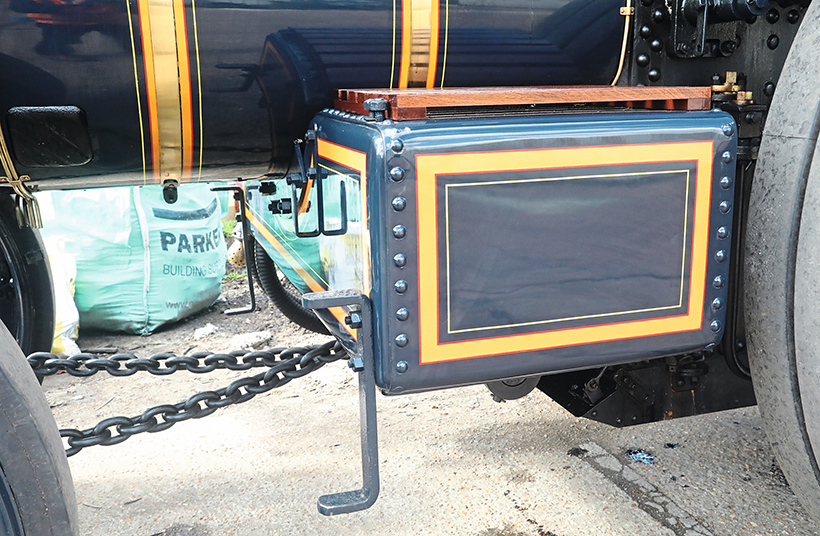
The belly tanks have a neat wooden platform on top, thus making it easier for the person oiling round, with less chance of muddy boots slipping or damaging the paintwork, another nice touch, I thought.
Like all these things there are a few rivets and seams to tap up, but on the road the engine is so impressive with its silent new gears and it was cruising comfortably at 16mph and was recorded at 18mph, without Paul opening the engine up. As we have said, the engine’s restoration will be a feature in our July issue, but here is the engine’s fascinating history in brief.
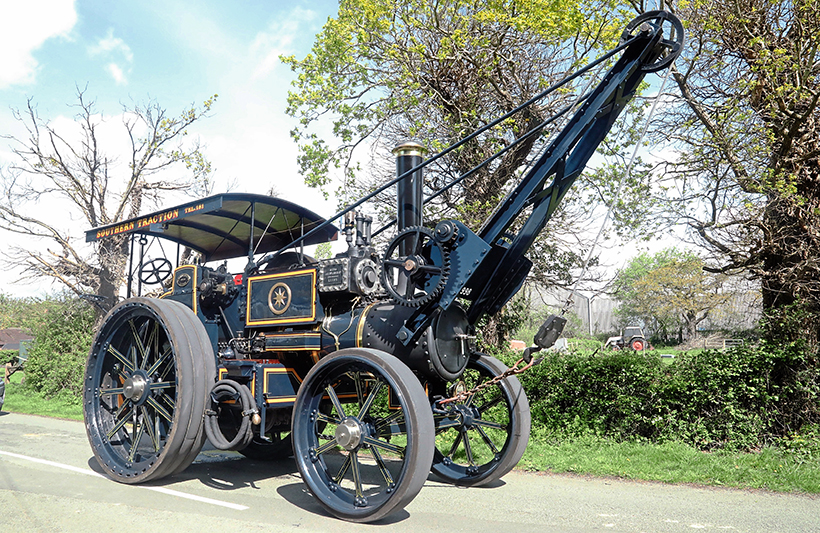
What a stunner, looking a treat some 102 years after it was built.
HISTORY
In January 1922 the genuine road locomotive 50TC NH3998 No. 1713 left the Midland Engine Works, Hunslet, Leeds of John and Henry McLaren. It was fitted with a crane to the order of Smith’s Timber of Northampton. It’s suggested it had a relatively easy life, but Paul has never come across a picture of the engine when in the timber yard, can any reader help?

The boiler assembly of November 1948 Merchant Navy Class 4-6-2 pacific No. 35025 Brocklebank Line which is going to be towed to the High Weald Steam Working Rally on Wednesday 12 June if all goes well. (Pic: Ian Langley)
It was then sold in 1940 to Northampton Corporation, fearing the aftermath of a blitz type air attack on the town, such as endured by London and Coventry, the borough engineers department decided that the crane engine would be a useful tool in clearing any heavy debris. In the event, although the town did suffer some damage from enemy air raids, the engine did hardly any work during this period.

New to Smiths Timber at Northampton, 1922 McLaren 8hp No. 1713 fitted as a crane engine to use in their yard. We see the engine at the next owner’s yard. (Pic: WS Love Collection)
The engine was shown at the John Crawley organised Woburn Abbey rally and its thought in 1959 the McLaren passed to Redmires Sand and Ganister Co Ltd in County Durham. The intention was to convert the engine to a showman’s engine and that happened when in 1961 it was sold to JD Ward of Walshingham, also in County Durham. It is known that it was fitted with a fairly small dynamo which was fitted sideways, parallel to the boiler, on the saddle rather than connected to the flywheel via a belt, as is normal. In this case it was powered by the gears fitted for the crane winch, a most unusual arrangement for which no picture is available (does any reader have a picture, as it was rallied like this for a short while?). After further work the engine featured the dynamo in the conventional position.
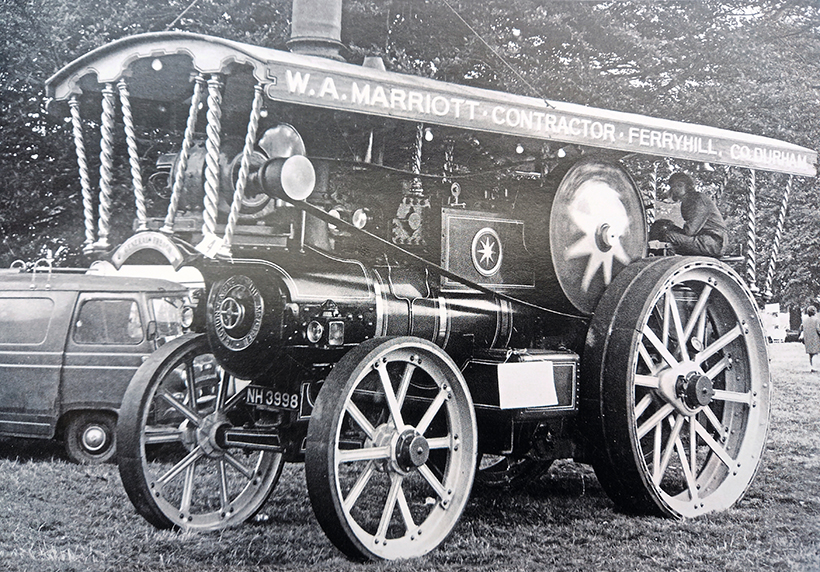
No. 1713 at Harewood House on 28 August 1972 in the ownership of WA Marriott in its second version as a showman’s engine. (Pic: John Meredith)
Six years later in 1968 the engine was in the hands of WA Marriot of Ferryhill, County Durham and in 1973 the McLaren made the journey across the sea to Northern Ireland and was in the ownership of Lord O’Neill at Shanes Castle, County Antrim. It is said that it was given the name “The Banshee” after an incident involving a party socialite, a large raven’s nest and a mysterious fire at his castle. Doubtless a tale steeped in Irish folk law. The engine had work by Harland and Wolff, Belfast and also Rory Woolf and the engine gained a larger dynamo that looked the part.

It was bought by Northampton Corporation in 1940 and was never used as such. The objective had been to have the engine in situ if the Nazis decimated Northampton with bombs during the war. Seen at the 1958 Woburn Abbey Rally, before No. 1713 was converted to showman’s specification. (Pic: WS Love)
In 1988 the engine returned to its native England and was sold to the Birch family of Sellindge, east Kent, who were well known local farming/road contractors, my uncle’s father worked for them on a ploughing set. They held a popular May bank holiday rally at their site for many years. After the attempt to sell the engine at the April 2017 Cheffins auction, which including a full set of new boiler tubes, the bidding stopped at £220,000 and failed to make the reserve price. Later on, Paul approached David Birch with a view to purchasing the engine. After some initial hesitation David agreed to sell the engine and the deal was completed in December 2017.

Lord O’Neill bought No. 1713 in 1973 and took her to Northern Ireland, now in its third style with larger dynamo. We see the engine at the Blindley Heath Rally on 1 July 1989 when owned by the Birch family. (Pic: Bob Moorman)
Do come to the rally to see No. 1713 in all its glory and everything else that the Mansi/Langley team have lined up. It will certainly be a great event at its new site.
This feature comes from the latest issue of Old Glory, and you can get a money-saving subscription to this magazine simply by clicking HERE

Previous Post
We sample a rare survivor, a 1967 Commer Imp van
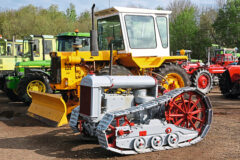
Next Post
Cheffins’ mega Vintage Collective sale!



